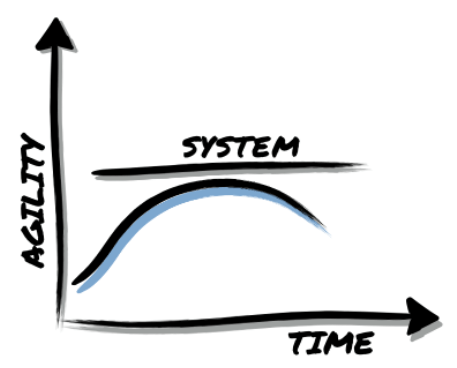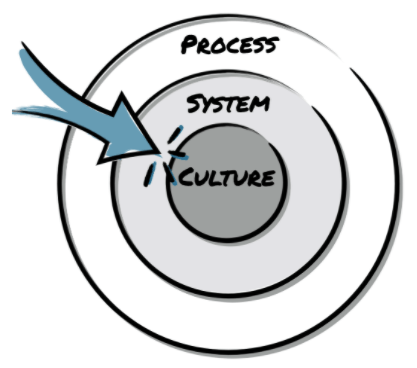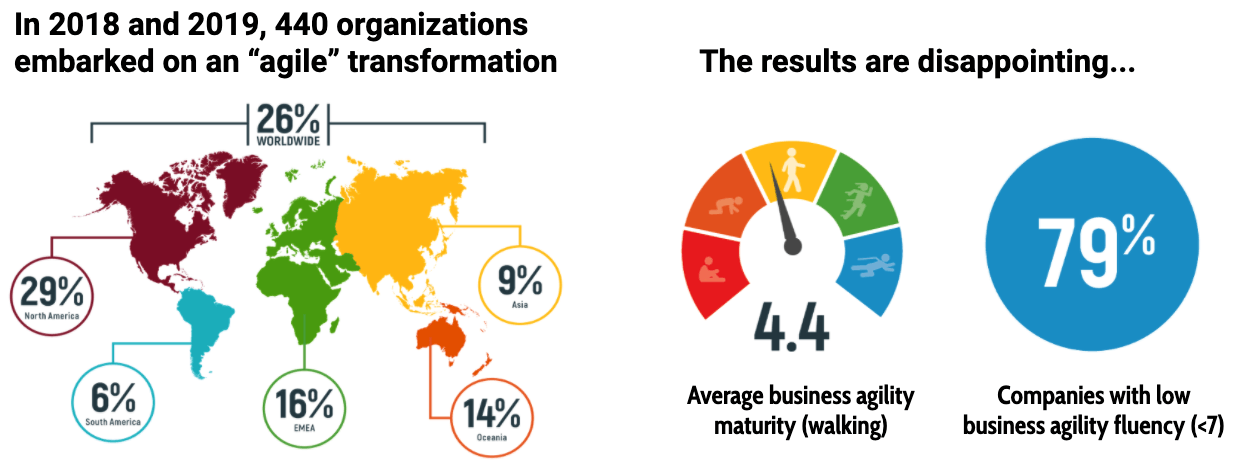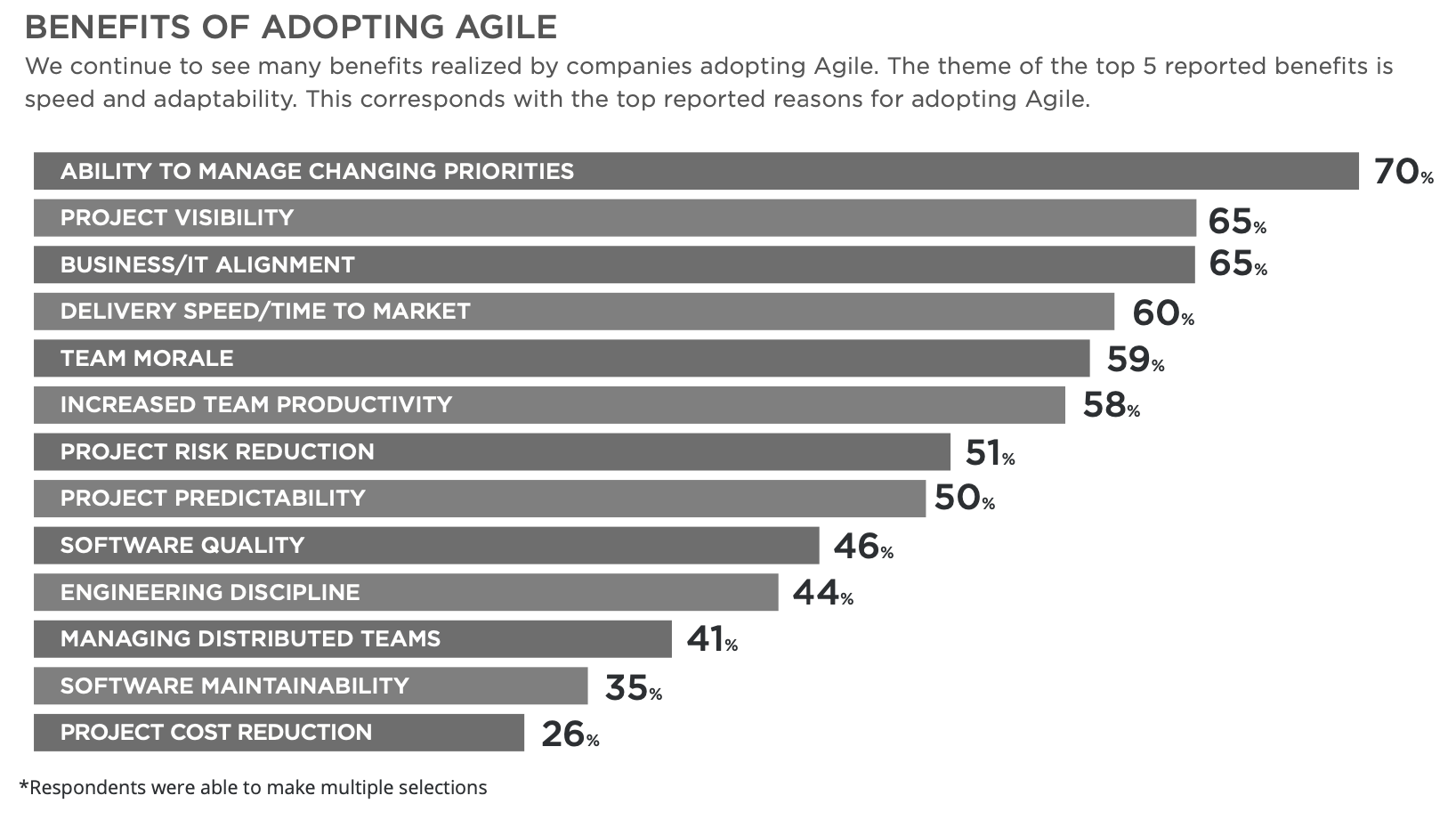Scaling Mindsets over Practices
Executive Summary
Agile Leadership Coach and Author Pete Behrens explores the state of agile at scale and the leader’s role in developing the organization’s resiliency and health to improve business outcomes in today’s complex and fast-changing marketplace.
The Agile Community has missed the mark on scaling. While the Agile Manifesto values individuals and interactions over processes tools, the agile scaling frameworks have taken the opposite direction. So while scaling frameworks are hyping their outliers' performance benchmarks, most organizations are disconnected and discontented.
Organizations mirror their leaders. Thus, agile organizations require agile leaders. And scaling agile ways of working across an organization requires agile thinking and behaviors across its leadership network. This article explores the agile scaling disconnect and how leaders can reconnect and ignite organizations through changing their own thinking and behaviors to improve business outcomes.
The Scaling Disconnect
The benefits of agile are real. Each year leaders are seeing the business value from agile ways of working. From the ability to manage changing priorities to reduced risk and cost, leaders are finding that increased agility improves business performance and outcomes.
But so are the barriers. Each year leaders are equally frustrated in their ability to achieve results from agility. From the lack of leadership engagement and inadequate management support to a general resistance to change and a culture that doesn’t align to the values the company is attempting to adopt, leaders have numerous hurdles to overcome to achieve the benefits listed above.
Agile Scaling Frameworks have become a “simple” goto solution , but are falling short in delivering expected outcomes.

While scaling frameworks claim impressive productivity, quality and other gains, they are often cherry-picking case studies on the right side of the bell curve.
The reality, based on an independent study in 2017 identified the benefits of agile being closer to 12%. However, that is reduced to about 5% when applied at scale.
This is a disconnect.
Culture: The Agile Scaling Challenge

As leaders seek to scale agility, the existing organizational system blocks it.
I have seen this challenge pattern across organizations for over 20 years. First as a leader introducing agile ways of working into my organization and later as a coach introducing it to dozens of organizations across various industries, regions and cultures.
The pattern can be illustrated quite simply. As leaders introduce agile into an organization, initial adoption may be quite easy and beneficial. However, as the leaders attempt to broaden its adoption, it struggles to grow linearly. Rather, it begins to plateau and often reverts.
The reason for this effect is that as agility grows, it starts to bump into the existing organizational structures, policies and measures of success. I refer to this as the organizational system. This system contains departments and divisions, roles and responsibilities, budgets and approvals, project reporting and risk mitigation, performance measures and incentives, and much more.
As agility crashes head on to the system, who wins? The system! It is easier to change agile than the system which has been in place for many decades. The result: the current ways of working get re-labled into “new” agile ways of working.
Why does the system win? Imagine the system as a bank vault protecting the organization’s most valued asset - its culture. Every organization, often through trial and error, but also through conviction of its leaders, adheres to a set of values which define it and why it is successful. This is one way to define culture - a set of norms or values - the way we do things around here.

An “Outside-In” approach to agility runs into the system that is protecting the company culture.
As a new agile approaches are introduced to an organization, they are typically applied “Outside-In”. That means that organizations start with the process of agile and tweak a few system elements to support it (e.g. introduce Scrum Master and Product Owner roles, redefine team boundaries, increase their working cadence, etc.).
“Outside-In” fails bottom-up and top-down. When teams attempt agility from the bottom-up, they struggle with leadership buy-in and ownership. Teams don’t have the influence to make the necessary system changes.
When leaders introduce agile top-down, they delegate the responsibility of the “agile process” to a working committee and don’t understand the need for more systematic changes.
Agile Transformations are not having a significant impact on organizational maturity and adaptability.

The Business Agility Institute surveyed 440 organizations in 2018 and 2019 to learn about how effective and impactful their agile transformations have been. The results are not inspiring. Agile Maturity was measured at the equivalency of a toddler learning to walk. In the terms of the report they describe “business agility basics are in place with more advanced approaches being explored” where almost 80% of the companies are below a “favorable” rating of 7.
This is a disconnect.








